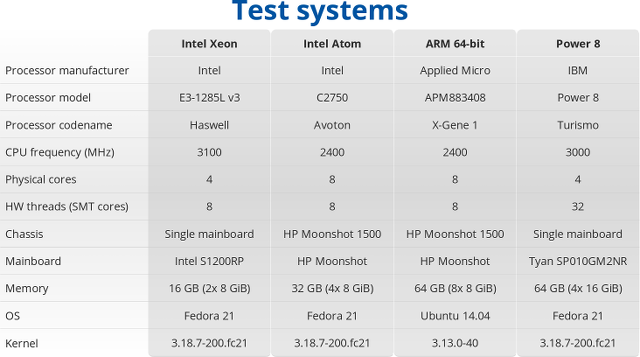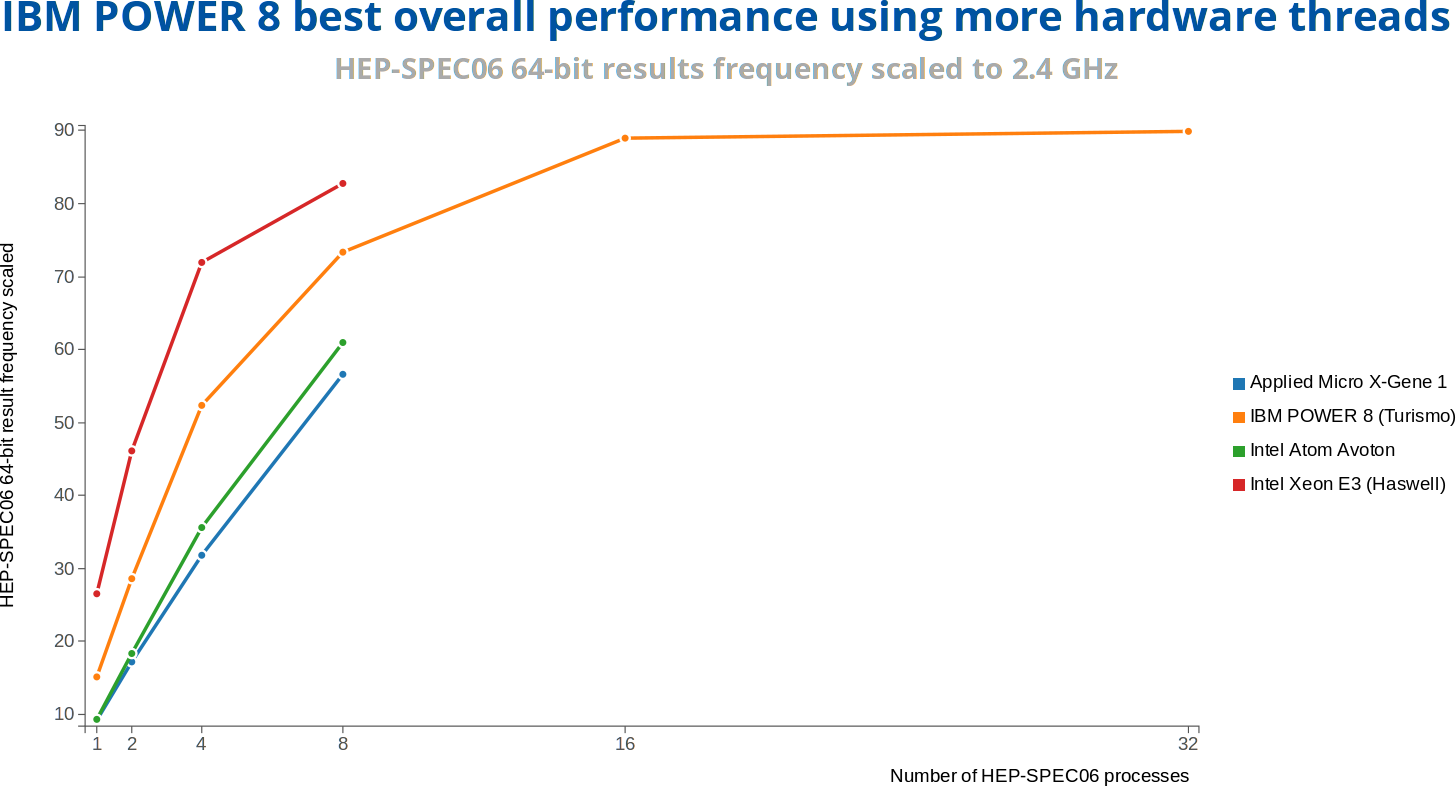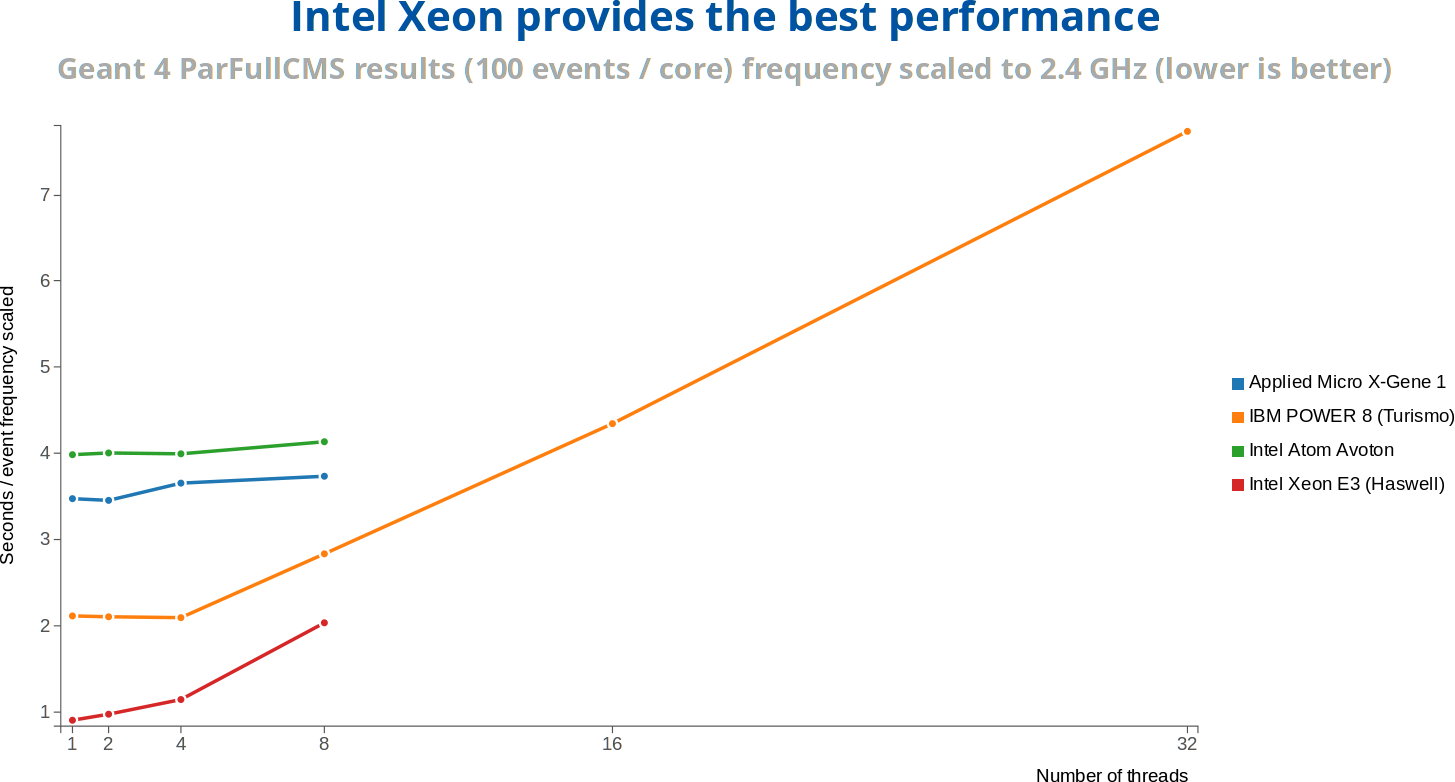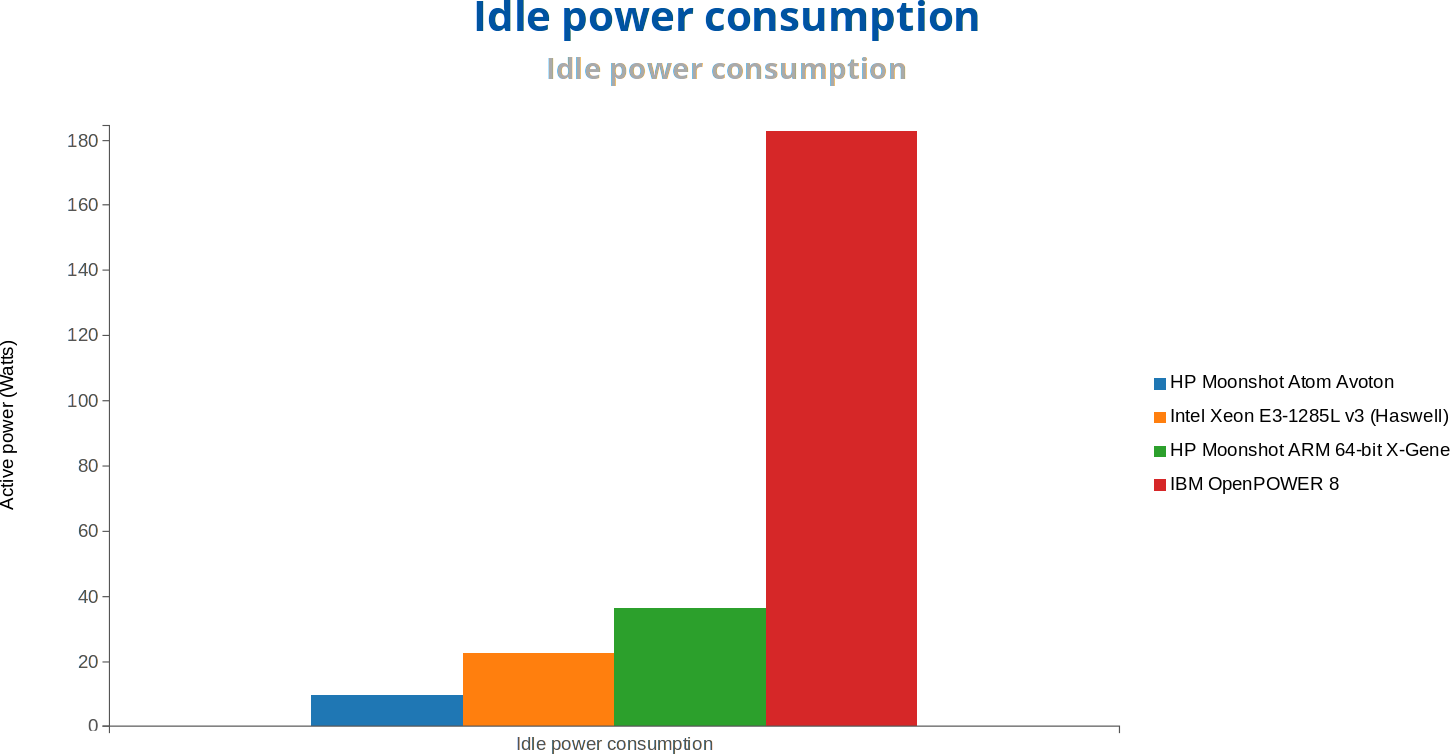Last year, the CERN published a paper comparing Applied Micro X-Gene (64-bit ARM) vs Intel Xeon (64-bit x86) Performance and Power Usage, and they’ve now added IBM Power 8 and Intel Atom Avoton C2750 processor to the mix in a new presentation entitled “A look beyond x86: OpenPOWER & AArch64“.

So four systems based on Intel Xeon E3-1285L, Intel Atom C2750, Applied Micro X-Gene 1, and IBM Power 8 were compared, all running Fedora 21, except the HP Moonshot 1500 ARM plarform running Ubuntu 14.04 and an older kernel. All four systems use gcc 4.9.2, and Racktivity intelligent PDUs were used for power measurement.
I’ll just share some of their results, you can read the presentation, or go through the benchmark results to find out more.

HEP-SPEC06 is a new High Energy Physics (HEP) benchmark for measuring CPU performance developed by the HEPiX Benchmarking Working Group, and here it’s not surprising to see the low power solutions under-perform the more powerful Intel Xeon and Power 8 processors, with the latter taking the crown.

Geant 4 simulates the passage of particles through matter, something that you would expect the CERN to do regularly. Intel Xeon E3 outperforms IBM Power8 processor here.
But let’s move on to power consumption, and performance per watt.

IBM OpenPower 8 has a much higher power consumption than other systems, and HP Moonshot ARM 64-bit X-Gene 1 consumes more than both Intel servers. The chart under full load (not shown here) also shows a similar pattern.

When it comes to performance per watt however, both HP Moonshot ARM and Power 8 systems are the least efficient here, and Intel systems provide the best ratio. Bear in mind that X-Gene 1 is manufactured with a 40nm process, while Applied Micro X-Gene 2 and 3 will be manufactured using 28nm and 16 nm FinFET processes, so some large efficiency gains could be expected here.
We may find out soon, as the CERN expects to add these two new processors, as well a Cavium ThunderX to their benchmarks in the future.
Thanks to David for the tip.

Jean-Luc started CNX Software in 2010 as a part-time endeavor, before quitting his job as a software engineering manager, and starting to write daily news, and reviews full time later in 2011.
Support CNX Software! Donate via cryptocurrencies, become a Patron on Patreon, or purchase goods on Amazon or Aliexpress




